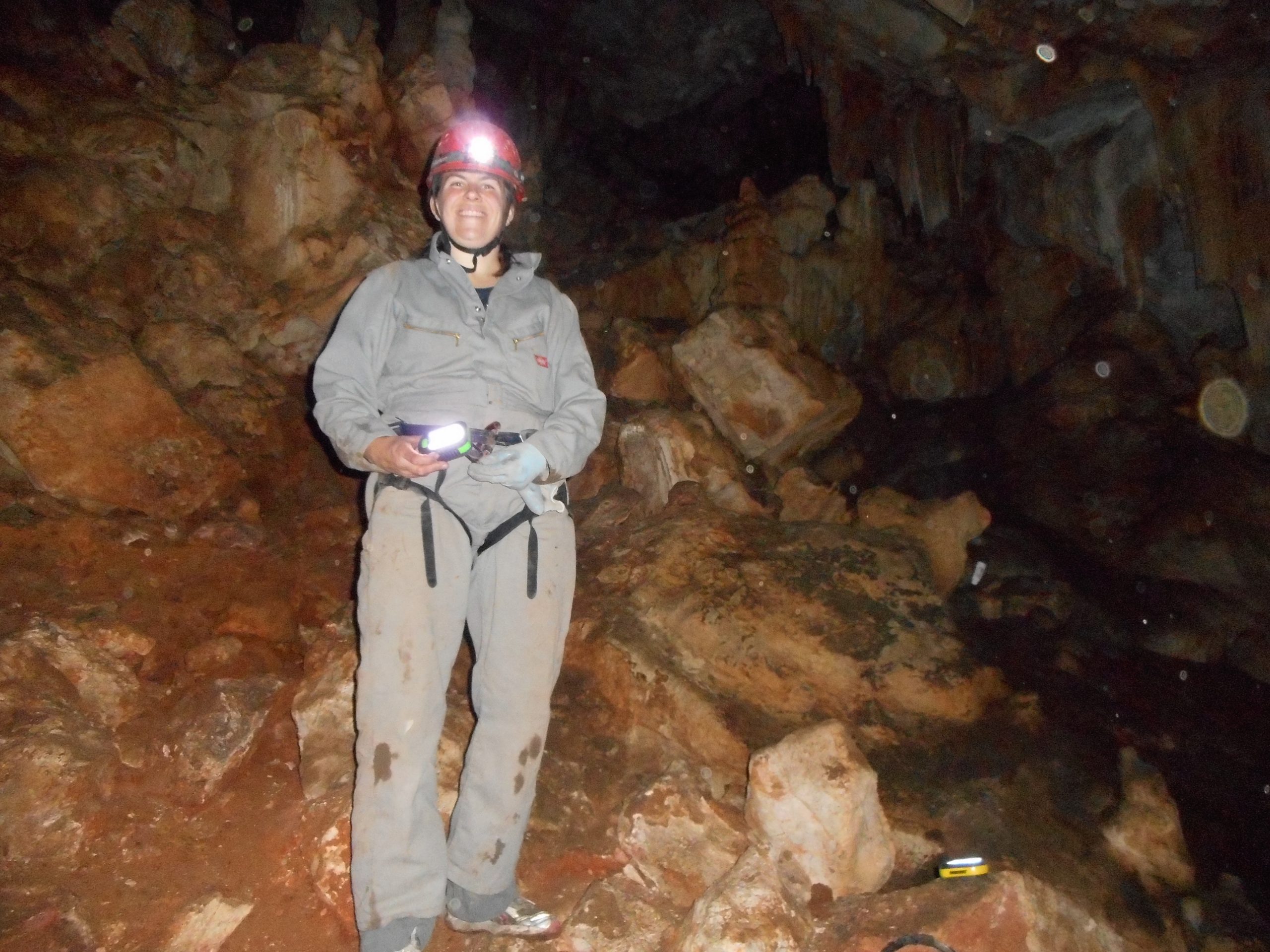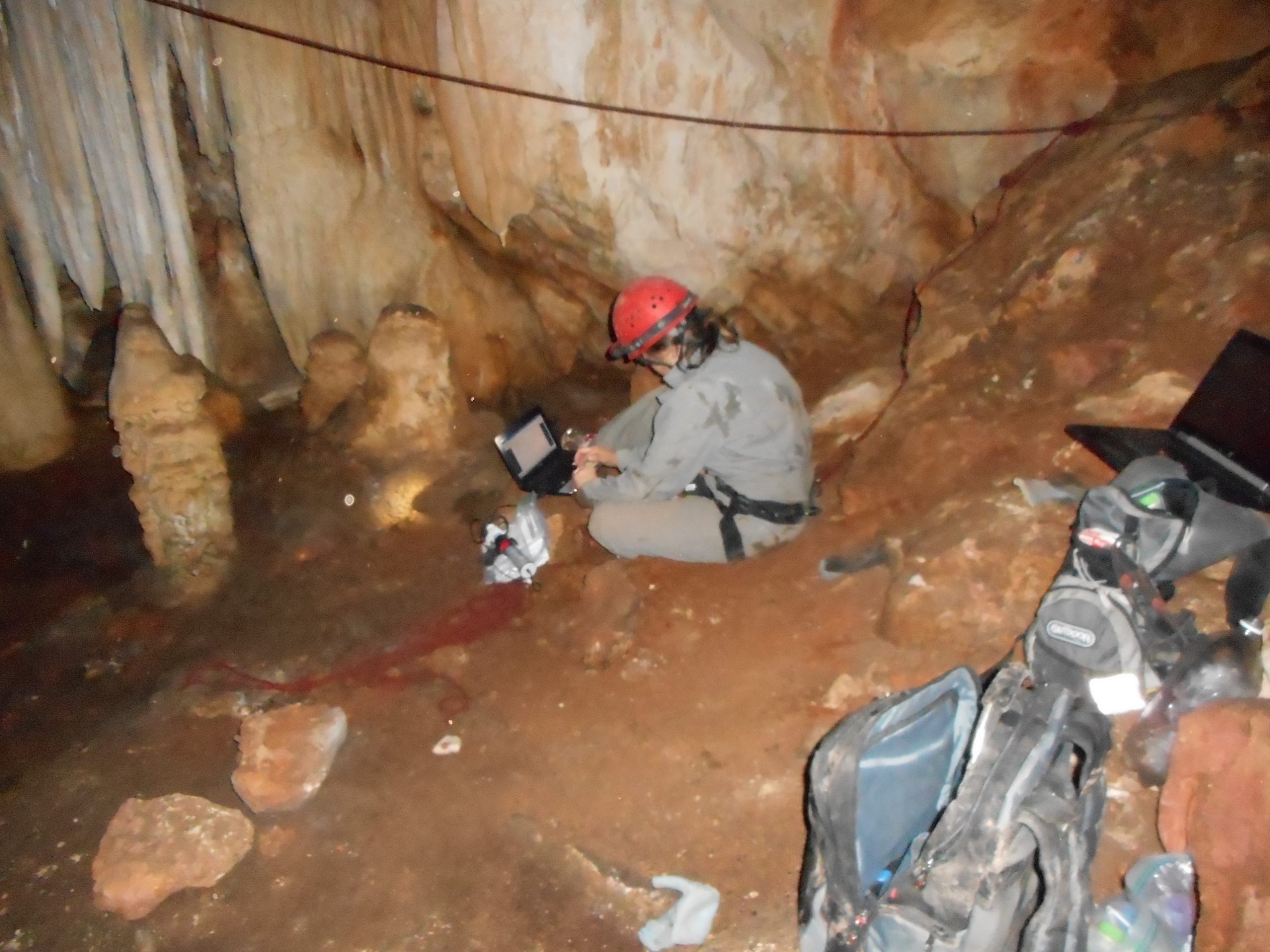The trip last week into Buraca Glorioso was a success!
We collected drip water (almost 4 liters!) and were able to collect drip count data. The drip count data will help us determine the amount of time that it takes precipitation to go through the rocks and start dripping in the cave. Since central Portugal has well-defined dry and wet seasons, the hope was that there would be an “off-on” signal apparent within the drip count data. While the signal never really turned “off” – water was dripping slowly all summer even though there was not a lot of precipitation – there is definitely an “on” signal noted over the last few weeks in October and November as precipitation in the region has increased.
When the drip water collection system was installed in June, we had no way of knowing how much precipitation might be collected. We have the capacity to collect 6 liters of drip water and we knew that it was a possibility for there to be almost no water or as much as 6 liters collected. There were almost 4 liters of water collected over the past 5 months. We will look at the oxygen and hydrogen isotopes of this water and see how it compares to the isotopes of the precipitation in the area and the isotopes of the calcite.
Additionally, temperature and relative humidity data has been collected for 15 months inside and outside of the cave. We can see that the humidity stays at or very near 100% at all times of the year inside the cave. Temperature varies outside the cave as expected. Inside the cave, the temperature varies as well but on a different time scale and the total yearly temperature variation is less than 1 degree Celcius.


